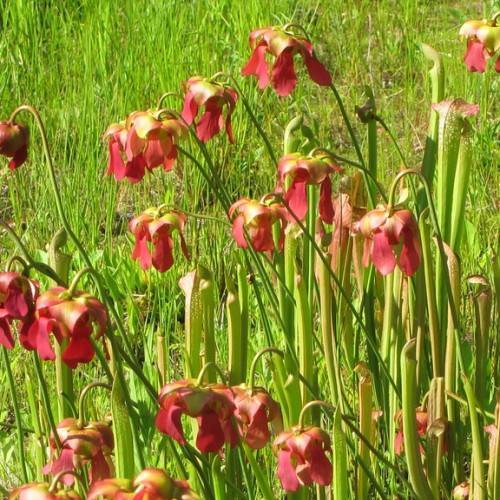
hybrid pitcher plant
Sarracenia excellens
Cycle:
Herbaceous Perennial
Watering:
Frequent
Hardiness Zone:
5 - 9
Flowers:
Flowers
Sun:
Full sun
Leaf:
Yes
Growth Rate:
Low
Maintenance:
High
Drought Tolerant:
Yes
Care Level:
Medium
watering
Hybrid pitcher plants (Sarracenia excellens) prefer moist soil conditions and need to be watered regularly to ensure that the soil remains well-hydrated. Keep the soil evenly moist but never soggy. Water the plant every 1 to 2 days in the growing season and every 2 to 3 days during the winter months. During the hot summer months, you may need to increase the frequency of watering to every 1 to 2 days. Be sure to pour water directly over the soil, and not on the plant foliage to avoid crown rot.
sunlight
Hybrid pitcher plants need a moderate amount of sunlight to thrive. They prefer full sun for at least 4-6 hours each day. It’s a good idea to place them in a bright area where they can get some direct sunshine early in the day. If possible, try to keep them out of intense heat or direct sunlight during the hottest parts of the day, especially during the hotter months. When winter comes, these plants benefit from filtered sunlight with a few hours of direct sun during the day.
pruning
Hybrid pitcher plants (Sarracenia excellens) should be pruned annually, at any point from late fall to early spring. Pruning should remove any dead or damaged leaves and any stems that may have died or become unhealthy. Pruning should also remove any side shoots produced by the plant. Removing these side shoots will concentrate the energy of the plant into fewer and bigger pitchers. Pruning should be done gently and very carefully, as over-pruning can damage the plant. Additionally, it is important to not leave major parts of the plant bare in order to avoid exposing the plant to too much sun or cold.
